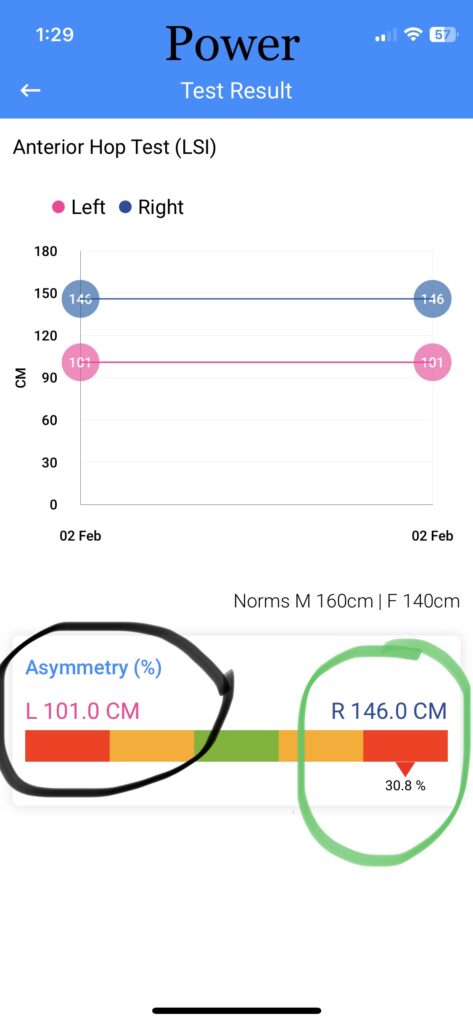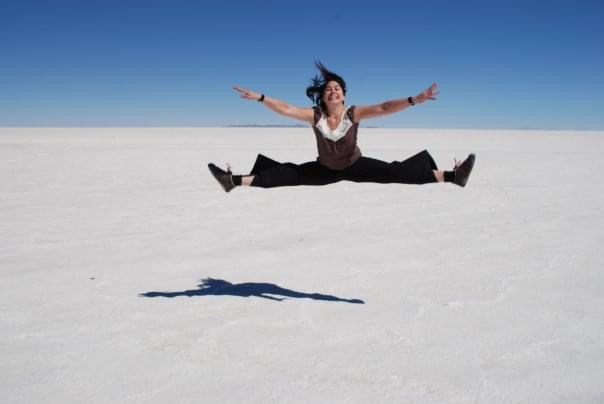Moving along with results from my massive 2.5hr personal Super Session of testing, we come to power and agility. Whilst my results were unsurprisingly dismal, this section of testing was fun, I love jumping & hopping!! When I was a gymnast I loved to leap and flip and fly through the air. It really was spectacular.
I’ve always thought it sad that gymnasts have to completely say goodbye to their sporting life upon retirement. Unlike most every other sport, in which you can continue to participate long into adulthood (so long as you can let go of your ego and expectations). You can shoot hoops, smash around a cricket ball, kick a footy (Hamstring flexibility permitting) well into your 40’s and 50’s, but that extra-ordinary feeling one experiences from flipping and flying through the air is entirely lost once one retires from the sport of gymnastics, most commonly in your teens as a girl (though I managed to hold on for quite a bit longer). And nothing in life quite compares.
However, as I type I realise that for me the use of past tense (loved…) should apply to ALL the aforementioned verbs listed, not just the gymnast-y ones, because in reality I no longer hop, skip nor jump at all. Which is a bit sad and definitely something I’d like to change cos aside from it being a bit fun; hopping, skipping and jumping could almost be representative of your state of living. If you’re able and actively participating in an activity that requires you to hop, skip or jump, then you’re very likely to be experiencing joy on a regular basis right? No one hops, skips nor jumps when miserable or melancholy.

THE ANTERIOR HOP TEST:
WHAT IS IT?: Primarily a test to assess and measure the power and function of a single leg, comparable to the other. Commonly used to determine readiness to return to sport after lower limb injury.
HOW?: Stand on one foot with your toes behind a marked line. Hop forwards, ensuring a “stuck” landing. ie: demonstrate control of the single leg balance upon landing before putting your foot down.
Measure the distance from the marked line to the back of your heel. Repeat the test 3 times, taking a short rest between attempts.
Record your best score, any symptoms experienced and repeat on other leg.
TRACEY’S (UGLY) RESULTS
R= 146cm
L= 101cm
JUST OVER A METRE!?! What a dismal display of power; an ability with which I used to excel! Leaps, jumps and tumbles were my thing! Just take a look at the image below, taken well after my gymnastics and tumbling career was over…. although, a mere 11 months prior to my Achilles tendon rupture.

NORMS:
Distance is a tricky thing, many factors need to be considered when determining comparative values; body weight, height, previous injury. With the Anterior Hop Test, we look toward symmetry, ideally less than 10% asymmetry between sides. Suffice to say 30.8% is far from ideal.
WHY?
I utilise power and agility testing with the more athletic client, although I don’t necessarily include such tests initially. Whilst the presence of injury is a factor in the decision to delay power and agility testing, reasoning lies more in the fact that I’m often more interested in learning about one’s mobility, strength and balance pertaining to their complaint before bothering with dynamic movement. ‘My’ results are a perfect example, one could easily guess how exceptionally crap my left leg hop would be once they learned how rubbish my left ankle mobility, balance, strength & co-ordination was. The Anterior Hop Test results were quite redundant.
Generally power and agility tests are helpful tools when attempting to gauge timing of a return to sport. And, like the Single Leg Sit to Stand Test as per Blog #6, I might also use this test to demonstrate safety (or lack there of) to my running clients.
MY ASSOCIATED PAIN/INJURY/RISK:
Let’s just say if I want to remain symptom free, I’ve a bit of work to do before my hop, skip and jumping dream ‘should’ come to be reality.
HOMEWORK:
Get testing!
If you’re able, ie: without injury and currently participating in more impactful physical activity, follow the instructions outlined above. Keep it honest….stick your landing!
A little tip: start conservatively. Quieten your competitive side. Hop LESS than you think you’re able initially, in order to get yourself a number on the board. Once you’ve got the technique you can unleash your ego and record breaking resolve.
Follow me on Facebook and Instagram for regular updates on “Tracey’s personal movement plan for action’. Where I’ll continue sharing the ugly results from my MASSIVE 2.5hr long Super Session, video analysed images of MY poor movement patterns, musings on my training experiences and more!
And if you’re interested in learning more about your body and how it moves, you can book an appointment below.